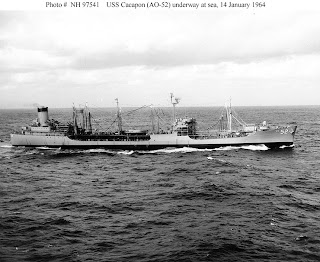Figure 2: USS Cacapon (AO-52) underway at sea, 14 January 1964. Official US Navy Photograph, from the collections of the Naval Historical Center. Click on photograph for larger image.
Figure 3: USS Cacapon (AO-52), right, rides high in the water while transferring her remaining fuel oil to USS Sacramento (AOE-1) off the coast of South Vietnam, 1 August 1966. Official US Navy Photograph. Click on photograph for larger image.
Figure 4: USS Cacapon (AO-52) at sea on 12 January 1972. Note the red "E" with a single hash mark on her smokestack. Official US Navy Photograph. Click on photograph for larger image.
Figure 5: USS Cacapon (AO-52) replenishing USS Hancock (CVA-19) from three refueling stations, circa 1972. Note the red "E" with one hash mark painted on Cacapon's smokestack. Official US Navy Photograph, from the collections of the Naval Historical Center. Click on photograph for larger image.
Figure 6: USS Cacapon (AO-52) underway, date and location unknown. Photograph courtesy of Robert Hurst. Click on photograph for larger image.
Named after a
river in West Virginia, the 7,470-ton USS Cacapon
was a Cimarron class oiler that was
built by the Bethlehem-Sparrows Point Shipyard at Sparrows Point, Maryland, and
was commissioned on 21 September 1943. The ship was approximately 553 feet long
and 75 feet wide, had a top speed of 18 knots, and had a crew of 302 officers
and men. Cacapon was originally armed
with one 5-inch gun, four 3-inch guns, four twin 40-mm guns, and four twin
20-mm guns, although most of these weapons were removed later on in her career.
Cacapon also had a cargo capacity of
roughly 146,000 barrels of oil.
On her maiden
voyage after being commissioned, Cacapon
transported fuel from the West Indies to Hawaii. She then continued further
into the Pacific to refuel ships that were part of the invasion force attacking
the Gilbert Islands. For the rest of World War II in the Pacific, Cacapon provided vital fuel oil to warships
that participated in a large number of military operations against Japan,
including the American attacks on the Marshall Islands, Rabaul, the Admiralty
Islands, Formosa, the Philippines, Iwo Jima, Okinawa, and the final naval
bombardments on the Japanese home islands. During this period of time, Cacapon supplied oil to ships of the
Third, Fifth, and Seventh Fleets.
During the
last months of 1945, Cacapon assisted
with the post-war American occupation of Japan and parts of China. In 1946, the
ship was assigned to transport oil from the Persian Gulf to the Pacific.
However, an accidental grounding at the Shah Allum Shoal in the Persian Gulf
sent her back to San Pedro, California, for repairs.
In 1947, Cacapon participated in Operation
“Highjump,” which was a major naval operation designed to establish a research
base in the Antarctic. The oiler continued
providing fuel to ships of the Pacific Fleet for the rest of the decade. Cacapon made four deployments to Asian
waters during the Korean War, which lasted from 1950 to 1953. While on her first deployment to Korea, the
ship helped support the amphibious landing at Inchon on 15 September 1950,
where she earned the Navy Unit Commendation for her high performance of duty.
For the next
20 years, Cacapon served in the
Pacific. She frequently voyaged to the western Pacific to support the US Navy’s
Seventh Fleet and the Taiwan Patrol Force. Cacapon
also participated in combat operations during the Vietnam War from 1965 into
the early 1970s.







